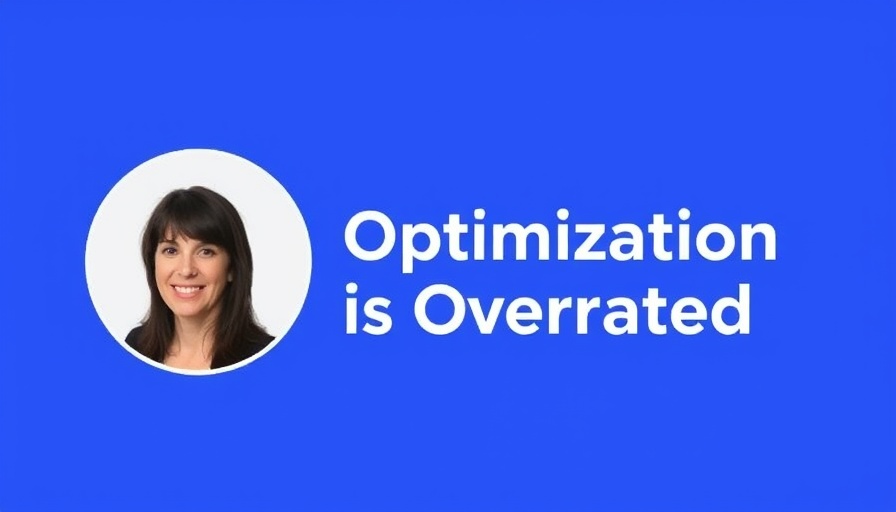
Why “Chunk Optimization” is the Latest SEO Misconception
As online marketers and SEO specialists dive deeper into the world of AI search, a new term has emerged: “chunk optimization.” It has been touted across various platforms as a magical key to improving visibility and enhancing rankings. However, the truth is somewhat more sobering: chunk optimization is, for lack of a better word, overrated.
The Illusion of Chunking as a SEO Tactic
At first glance, the concept of chunking sounds appealing. The idea is to format your content into manageable, digestible pieces that search engines can easily navigate. But here’s the kicker: chunk optimization is a technical term pilfered from AI engineering, misunderstood and misapplied within the SEO community. Most practitioners equate it to merely good content structuring—short paragraphs, scannable sections, and clear subheadings. But let’s take a moment to dissect why this mindset might lead you astray.
AI's Perspective on Your Content
One of the fundamental misunderstandings lies in how AI systems consume content. Large language models (LLMs) don’t read your content as you do; they vectorize text on a micro-level, breaking it down into tokens—whole words or parts thereof—while ignoring the pretty formatting that SEO experts love to discuss. Your lovably crafted sections of 100-word paragraphs? They get distilled into numerical points of meaning that collectively inform search queries.
Breaking Down Actual Content Chunking
Let’s address how the real chunking works: it's a process of breaking long documents into smaller, efficient pieces for machine readability. In essence, when using AI tools like Retrieval-Augmented Generation (RAG), your content is reduced to its simplest, most relevant components. This means it doesn’t matter if your content is nicely chunked into 50-word sections or sprawling 200-word essays; what matters is how the AI indexes these components.
What You Should Focus On Instead
Rather than chasing the ever-elusive goal of chunk optimization, marketers should pivot towards creating atomic content. This refers to self-contained sections that answer user queries independently. The beauty of atomic content is its universal appeal—it works not only for human readers but also for LLMs seeking precise, relevant answers.
Strategizing Content Structure for AI
The takeaway for SEOs? The chunking that happens within AI models is largely out of your control. Different LLMs may use various chunking strategies based on model capabilities, cost considerations, and the context of the query. This makes the notion of optimizing chunks for visibility superfluous. Instead, focus your energy on creating high-quality content that aligns with user intent—no gimmicks required.
The Future of AI and Content Strategy
As AI continues to evolve, the strategies you use for SEO must also adapt. Recognizing that chunk optimization isn’t the golden ticket will free you up to explore more effective means of engaging your audience. By understanding what LLMs prioritize and aligning your content creation accordingly, you hold the potential to attract more organic traffic without the fog of misguided strategies.
Final Thoughts
Embracing a nuanced understanding of how AI functions can prove invaluable in the rapidly changing marketing landscape. While ‘chunk optimization’ may have swept through the SEO community with promises of greater visibility, it’s time to reassess what truly works: creating valuable, atomic content that resonates with both users and search engines. Let's abandon the myths and focus on what makes real impact.
If you’re ready to pivot your strategy and harness the true power of AI in your content creation, now is the best time to reshuffle your approach. Shift the narrative to genuine engagement—after all, meaningful interactions are the future of successful marketing.
 Add Row
Add Row  Add
Add 




Write A Comment